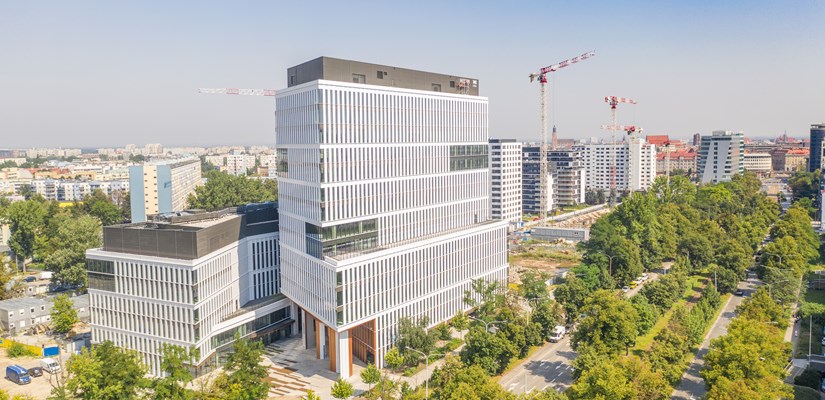
Europe is going green
The urging necessity to generate a positive impact on the climate can be also seen in worldwide regulations. As part of the European Climate Law, the European Commission has proposed a legally binding target of achieving net zero greenhouse gas emissions by 2050. Poland, for example, has already taken steps in this direction - the Council of Ministers has approved the newest version of the energy policy through 2040 which aims, among others, to reduce the share of coal in the electricity generation mix from 72% in 2020 to 56% in 2030. When it comes to the building sector, the major focus is on the existing building stock as it is responsible for 40% of the EU’s energy consumption and more than one third of greenhouse emissions. However, only 1% of buildings undergo energy-efficient renovation every year, so it is crucial to act quickly.
Poles are aware of the problem
As it turns out, Poles are an example of residents in the CEE region, who are aware of the current situation in terms of climate change – more than half of them indicate the protection of the environment as the most problematic area for the country (even before issues related to the healthcare system and economic development)[1]. According to the report “Zielone miasta i gminy” 2021 by innogy Poland, in the creation of which the Skanska residential development unit in Poland was also involved, the majority of Polish residents (70%) consider climate change as a significant threat to themselves. Half of the respondents claim that companies should act pro-ecologically, while nearly 88% of Poles believe that the country should financially support the implementation of renewable energy sources[2].
Green and safe buildings – a desirable combination
The construction sector is constantly developing in terms of green buildings that are certified and thus safe. The number of certified buildings in all countries in CEE amounts to over 1,600, while nearly 850 of them are based in Poland where the usable area of buildings with certificates, such as BREEAM, LEED or WELL has exceeded 17 million sqm. One company regularly growing in this direction is Skanska – it has received the WELL Health-Safety Rating certificate for eight of its projects in CEE. Currently, the total LEED-certified office space within Skanska’s projects amounts to nearly one million sqm, while over 50,000 sqm also have a WELL Core & Shell certificate.
In harmony with nature for many years
Skanska has always followed the “green” approach in business. The company has set a climate target to reduce 50% of carbon dioxide emissions by 2030 and achieve net-zero emissions by 2045. Some of the “direct effects” of Skanska’s actions leading to achieve this goal are its buildings that are 100% powered by renewable energy sources, such as Centrum Południe in Wroclaw or the Wave office building in Gdansk.
- On our way to achieving the climate target, we are working on various innovative green solutions. An example of such activities is the fact that since 2018 we have been testing the perovskite solar cells in cooperation with Saule Technologies. So far, the solution has been tested in the Spark office building in Warsaw. Now we are launching a pilot production line, which will allow the production of cells in a larger format, says Katarzyna Zawodna-Bijoch, President and CEO of Skanska office development in CEE.
Another sustainable solution used by Skanska which aims to improve the air quality near our office complexes is the anti-smog pavement made of concrete. The first project to test it was the Warsaw investment Generation Park, located at Rondo Daszyńskiego - the results showed a 30% lower concentration of nitrogen dioxide, compared to regular pavement. Ultimately, this innovation is to be implemented in new Skanska projects in the CEE region.
- Caring for the natural environment is an essential part of Skanska’s business activities as it is also directly related to our company values. It is a great responsibility to run a business on such a large scale and we are well aware of how it affects the world. Thus, we are constantly implementing more and more solutions that will help us achieve our climate target and, most importantly, provide a healthy, sustainable environment for both the planet and the workers in our office spaces, adds Katarzyna Zawodna-Bijoch, President and CEO of Skanska office development in CEE.